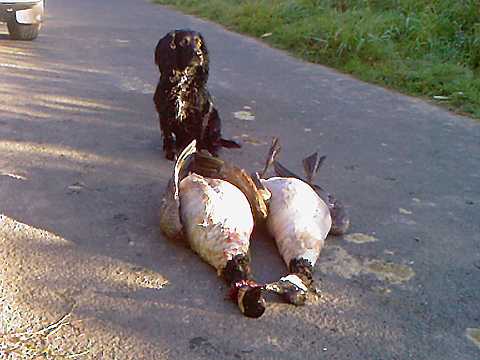Wildfowling dog: My two-year old Labrador is enjoying his first season in the field and doing okay – he has…
Win CENS ProFlex DX5 earplugs worth £1,149 – enter here
Why is the Labrador retriever such a favourite with shooters?
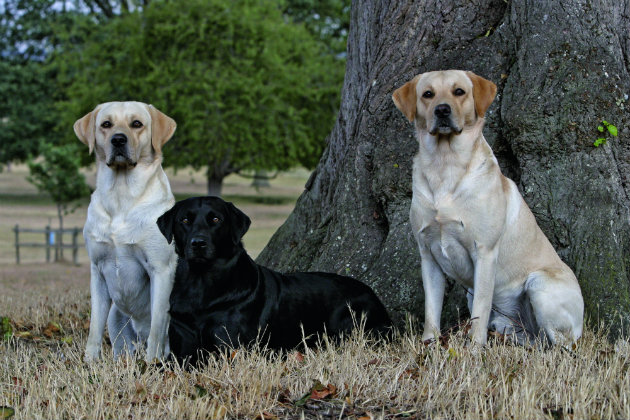
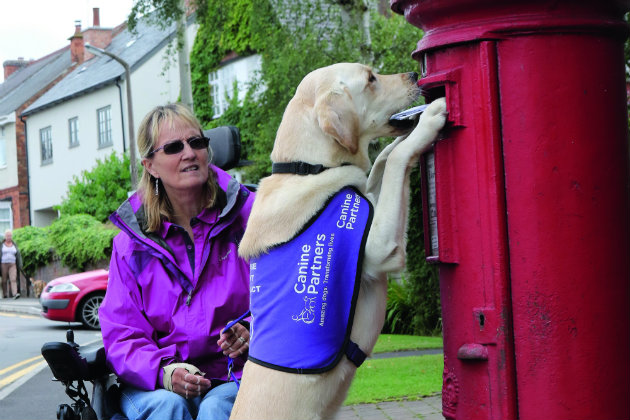
The Labrador retriever is the eyes and ears of its owner
A versatile breed, this hunting companion is the eyes and ears of its owner, can be used to detect drugs, explosives, open doors and even post letters. It can guard, jump, swim, and is the epitome of man’s best friend. No article on the breed would be complete without mentioning the Buccleuch Labrador.
The Buccleuch Labrador
In the 1830s, the 5th Duke of Buccleuch, Walter Francis Montagu Douglas Scott, was one of the first to import dogs from Newfoundland to his estates in the Scottish Borders for use as gun dogs due to their excellent retrieving capabilities.
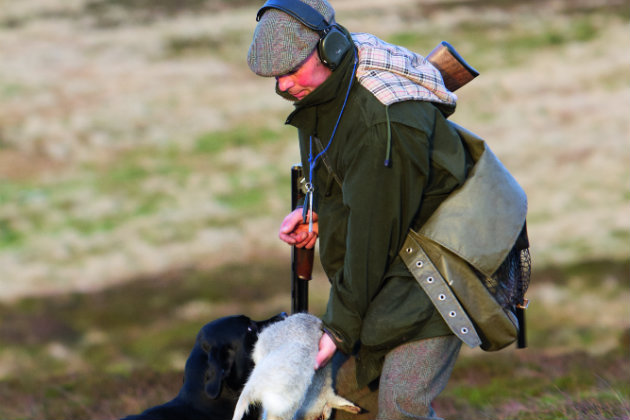
Excellent retrieving abilities led to these dogs being used as gun dogs in the Borders
Another advocate of these marvellous Newfoundland dogs, or Labrador retrievers as they became known, was the 2nd Earl of Malmesbury. He bred them for use in duck shooting on his estate because of their expertise in waterfowling and their “close coat which turns water off like oil” and a their tail “like an otter”. In the 1880s, the 6th Duke of Buccleuch and the 3rd Earl of Malmesbury met while shooting and the first two entries in the studbook of the Duke of Buccleuch’s Labrador retrievers were the gifts made by Lord Malmesbury to the 6th Duke. When these dogs were mated with bitches carrying blood from those originally imported by the 5th Duke, a strong bloodline was developed. In fact, the Buccleuch Kennel is almost unique as the original pure strain has been strictly maintained and all Buccleuch Labradors can be traced back to those first imported dogs. Being bred entirely for “work” purposes, Buccleuch Labradors were never actually trialled at the time, but the bloodline formed the ancestry of many champions. Traditional Buccleuch Labradors have a good nose, a tender mouth and are intelligent and courageous. Their heads are often shorter than the average Labrador, they have a thick double coat and frequently have the “otter” tail. The pure strain can only throw black puppies.
The duke’s kennel contained 150 dogs by the 1920s, but he was not active in maintaining the line. No new dogs were imported between 1890 and 1930 due to a Sheep Protection Act in Newfoundland and the introduction of quarantine restrictions. World War II and a distemper epidemic in 1948 also took their toll. However, some progress was made by the Earl of Dalkeith (the 9th duke) and much use was made of Vaulter, a dog displaying a broad head, thick double coat and short otter tail. Many of today’s Buccleuch Labradors can be traced back to him.
In the field
Born to retrieve, a Labrador will gladly run around with whatever it can get in its mouth. This ability has to be nurtured and developed to the point where the trained dog can be sent 100-150m to find shot game that it didn’t even see come down. It then has to return to the handler negotiating fences, rivers and ditches and deliver the game, undamaged, to hand. To achieve this takes trust between the handler and dog, plus months of dedicated training.
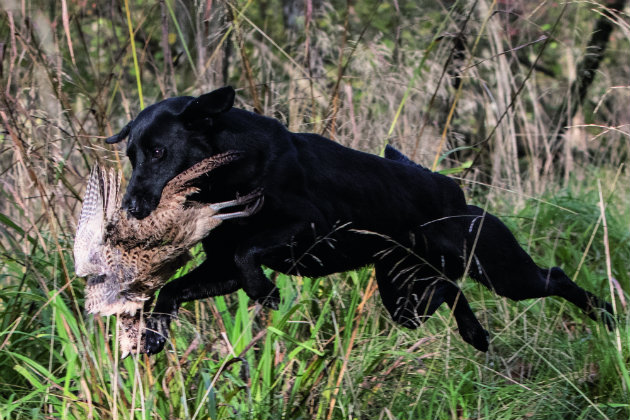
A trained Lab can be sent to retrieve a bird it didn’t even see fall, such is their ability
Labs come in black, yellow and chocolate. Over the years, black became the dominant colour and in the early breeding programmes yellow and chocolate-coloured puppies were often “culled”. Most gundog people regard chocolate Labradors as fat and lazy, but there are plenty of brown Labs working in the shooting field and a few have even been very successful in field trials. I sometimes think that being a peg dog must be the most boring job a gun dog can perform. To sit stock still next to your owner watching bird after bird fly overhead and then be sent for fairly easy retrieves is hardly taxing, but the Labrador has taken this job in its stride.
Natural instinct
Every natural instinct of the dog has to be channelled into self-control. It must be steady to birds falling all around it; it may have to be sent for a running bird and ignore all the dead ones; it must not make a sound as squeaking in the field is a cardinal sin. But the element the Labrador retriever really excels in is water. Ideally, the breed should have a double coat and many dogs that have the old-fashioned blood lines in their ancestry will have a good thick “otter” tail that works as a rudder when the dog is swimming.
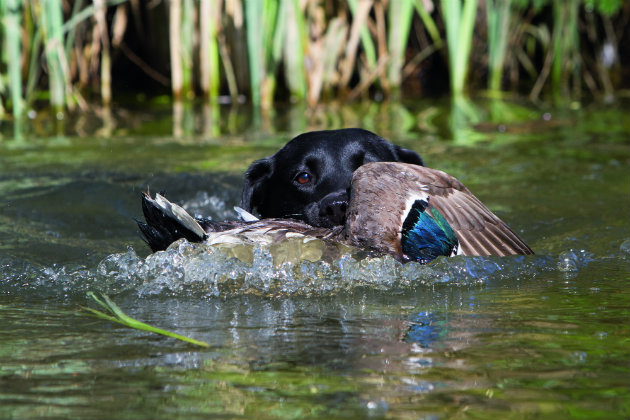
The Labrador retriever excels in water
A few years ago I took a trip out to the east coast to accompany a well-known wildfowler and his yellow Lab. The dog looked as though it had seen some hard work with a large scar on its head, but over the next 10 hours my admiration for this dog grew. The weather was cold and there was snow in the air. The dog took full advantage of the shelter his handler gave from the driving wind. During the long hours of inaction, the dog didn’t move which was vital, as the slightest movement would have spooked the flighting wildfowl.
As the day wore on, a teal was shot and the dog sprang into action. He negotiated a tidal mudflat, found the bird and made the retrieve, all without any command from the owner. The dog returned to the bank covered in mud and soaking wet, but he curled up and waited for the next piece of action.
This came just as dusk fell. The tide had started to come in and the channel on which we were hoping to catch the evening flight of duck was starting to flood. This time, a wigeon was shot and in the darkness the Labrador leapt into the icy water. There was quite a flow in the channel and in the gloom I could just make out the dog trying to make for the far side of the bank, where it instinctively knew the dead bird was. After 15 minutes a very wet and cold, but triumphant, Labrador climbed up the bank with his retrieve.
The Labrador has long been the most popular breed of dog both here and in the US and it is easy to see why when you consider what a versatile breed it is.
Related Articles
Get the latest news delivered direct to your door
Subscribe to Shooting Times & Country
Discover the ultimate companion for field sports enthusiasts with Shooting Times & Country Magazine, the UK’s leading weekly publication that has been at the forefront of shooting culture since 1882. Subscribers gain access to expert tips, comprehensive gear reviews, seasonal advice and a vibrant community of like-minded shooters.
Save on shop price when you subscribe with weekly issues featuring in-depth articles on gundog training, exclusive member offers and access to the digital back issue library. A Shooting Times & Country subscription is more than a magazine, don’t just read about the countryside; immerse yourself in its most authoritative and engaging publication.






